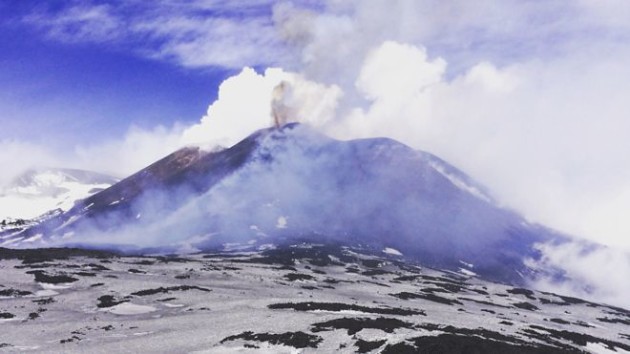Etna escape: ‘Pelted with the deadly, hot debris’
 By Rebecca Morelle / Mar 18:When we arrived in Sicily, we discovered that we were in luck: Mount Etna had just started to erupt again.
By Rebecca Morelle / Mar 18:When we arrived in Sicily, we discovered that we were in luck: Mount Etna had just started to erupt again.
I was part of a BBC team who had come to film a report on volcano monitoring.
Getting to witness an awakened Etna was about as exciting as it gets for a science correspondent. I just didn’t intend to have quite such a close encounter.
The conditions were perfect – blue skies and barely any wind. And as we travelled towards the snow-covered summit, the thunderous booms as Etna spewed magma from its south-east crater reverberated all around.
We had come to see a lava flow that had appeared overnight. A giant stream of rock, glowing red, was oozing down the slopes – and we had been taken there by a scientist from Italy’s National Institute of Geophysics and Volcanology, who was monitoring its progress.
Dozens of tourists had also been brought by Etna’s guides to see the spectacle.
The lava was so slow moving it’s not usually considered dangerous, and the fierce heat as the rocks fizzled and crackled preventing anyone from getting too close.
But about 20 minutes after arriving, a burst of white steam emerged from the lava – it didn’t make much of a noise or look especially threatening – but the guides started asking people to move.
Then, moments later, there was an explosion. The lava had mixed with snow and ice, and boiling rocks and boulders were flung up high into the air. They started to rain down in every direction.
Everyone started to run, pelted with the deadly, hot debris. But it was impossible to see – steam from the explosion had caused a whiteout.
I fell as I was trying to get away, trying to cover my head. All I could hear was the thud of rocks hitting all around.
We were on Etna to learn about new monitoring techniques
I truly thought that we were going to die. Somehow, our camerawoman Rachel Price kept on filming – her footage is astonishing.
Even when a boiling rock fell into her coat, quickly burning through her clothes and reaching her skin, she kept the camera rolling.
Producer Alison Francis, too, was hit by falling debris – her coat was peppered with burns where rocks had struck, and her hat saved her from a more serious strike to the head.
Amidst the chaos, the sound of an engine rose, and the driver of the snowcat vehicle that had taken us up the slopes started to beep its horn to help us locate it.
Dodging more flying rocks, we got on. A guide screamed in agony from a dislocated shoulder, others were bloody, burned and bruised – but we had all managed to escape.
Badly shaken, I spoke to the volcanologist whose work we had been filming. Bleeding from a hit to the head, he told me it was the most dangerous incident he’d ever experienced at Etna, which he’d spent 30 years studying.
As we took stock and spoke to the medics who had quickly appeared on the scene, it was astonishing to realise that there were no serious injuries or even deaths.
Watching Rachel’s footage back, we can see that we all had an extremely narrow escape. It reminded us just how dangerous these forces of nature can be. agencies
